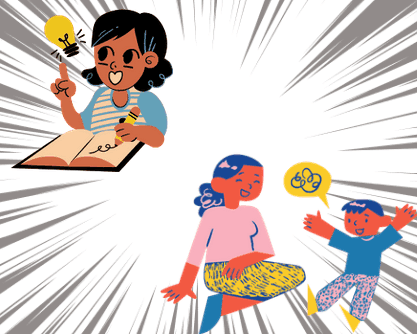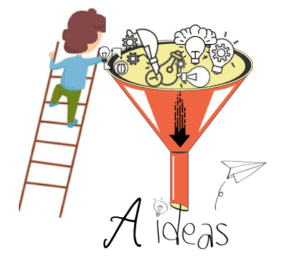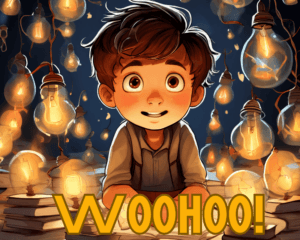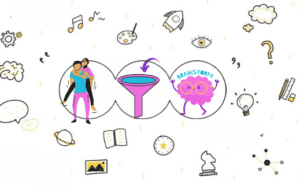LESSON 1.2
Grade Your Ideas
Grades 1-3
You have a lot of fun ideas. Now it’s time to pick the best ones. Like you love hearing exciting stories, grown-ups too crave something new and unexpected.
Use the grades below:

A = Awesome : adult strangers probably do not know much about this idea AND are probably interested, they likely will say Woohoo!

B = Better : adult strangers probably do not know much about this idea, but it doesn’t amaze them. They say, “Hmmmm.”

C = Common : adult strangers probably know this already OR probably are not interested. They yawn.
Your Readers Are Adult Strangers

When you write, think about adults you’ve never met. They have busy lives and limited time. They don’t want to read about what they already know or what they don’t care about. So, write something new and interesting for them.
Woohoo!
To earn an “A” grade, an idea should make an adult stranger say, “Woohoo!”
Don’t worry if you don’t have a bunch of A Ideas right away. The more you try, the more WOOHOO ideas you’ll come up with..


Task 1.2.1 – Small Group
 Think about what could go wrong on a road trip.
Think about what could go wrong on a road trip.
Here are some ideas that would come to a grown-up:
- Flat tire (C)
- Crying baby (C)
- Medical problem (C)
- Running out of gas (C)
- Meeting a dangerous hitchhiker (C)
No “A” Ideas?

- Keep brainstorming ideas.
- Funnel down to get to “A” ideas.
- Piggyback others’ ideas.
Funneling
Think of a funnel. It starts big and gets smaller. When you brainstorm, imagine your thoughts going through a funnel. Here are some examples:

- Car trouble (C)
- Flat tire (C)
- Forgot the jack (C)
- The jack doesn’t work (B)
- Flat tire (C)
Example B:
- Someone gets sick (C)
- Carsick (C)
- Sick from eating peanut butter (A)
Example C:
- We get lost (C)
- The GPS doesn’t work (B)
- We may be late to our destination (C)
Task 1.2.2 – Small Group Activity
Take one of our B or C ideas and come up with at least 15 more specific ones.
Here’s an example:
Idea: Playing basketball
- Shoot around (C)
- Play horse (C)
- Shoot free-throws (C)
Funneling “shoot free-throws”:
- Concentrate on balance (B)
- Pretend I’m in a real game (C)
- Visualize the shot (C)
- Visualize the shot before shooting (B)
- Use my coach’s visualization method (A)
- Tape-record and analyze my shooting (A)
- Teach my little brother to shoot (C)
- Teach my little brother about wrist control (C)
- Teach my little brother (who has cerebral palsy) about wrist control (A)
Piggybacking
Another way to brainstorm ideas is piggybacking. It means that when someone shares an idea, you think of similar ones. It may not always give you the best ideas, but it can help you think in new ways.
 Your journey by car could produce piggyback ideas, such as:
Your journey by car could produce piggyback ideas, such as:
Mechanical Problems
- Flat tire
- Alternator goes bad
- Car overheats
- Radiator explodes
- Brakes go bad
- Tailpipe falls off
Task 1.2.3 – Small Group Activity
Come up with at least five ideas based on one B or C idea from our car journey. Do the same with another B or C idea.
